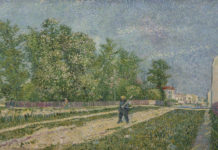Finding Hidden Treasures: The Art of Samuel Adoquei
Adoquei's major portraits and historical paintings are known for their ambition, provocation, and technical mastery.
Unnamed Figures: Black Presence and Absence in the Early American North
Despite their importance, the experiences and contributions of Black people have generally been invisible in our country’s historical artworks...
New Installation: Life-Size Painting of President Abraham Lincoln
Created from life in 1865, the 9-foot-tall oil on canvas is one of three known, life-size paintings of the 16th president.
El Greco, Goya, and a Taste for Spain
Discover an exhibition of three centuries of saints and sinners, secular and sacred likenesses meant to inspire devotion, admiration, and at times discomfort.
Cowboy Artists of America
Featuring works typically only seen in private collections and never before exhibited together, the exhibition includes...
The Tudors: Art and Majesty in Renaissance England
The first exhibition in the United States focusing on art created during the Tudor dynasty will feature more than 100 paintings, tapestries, sculptures, and more ...
Wildlife Art, Past and Present
Learn about an exhibition that traces how the essence and beauty of the American West’s animals have captivated talented artists for more than a century.
Van Gogh Comes to Santa Barbara
Visitors can look forward to a plethora of performances, activities, and visuals occurring throughout the community with the participation of 16 partner organizations.
8th Bighorn Rendezvous
On view will be oils, monotypes, pastels, and bronzes created by these 13 invited artists ...
One Each: Still Lifes by Five French Painters
This museum exhibition focuses on still life paintings created in the mid-1860s, the formative years of Impressionism. Where is it?










